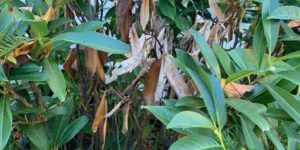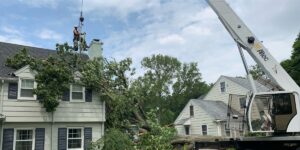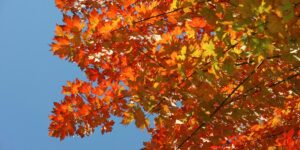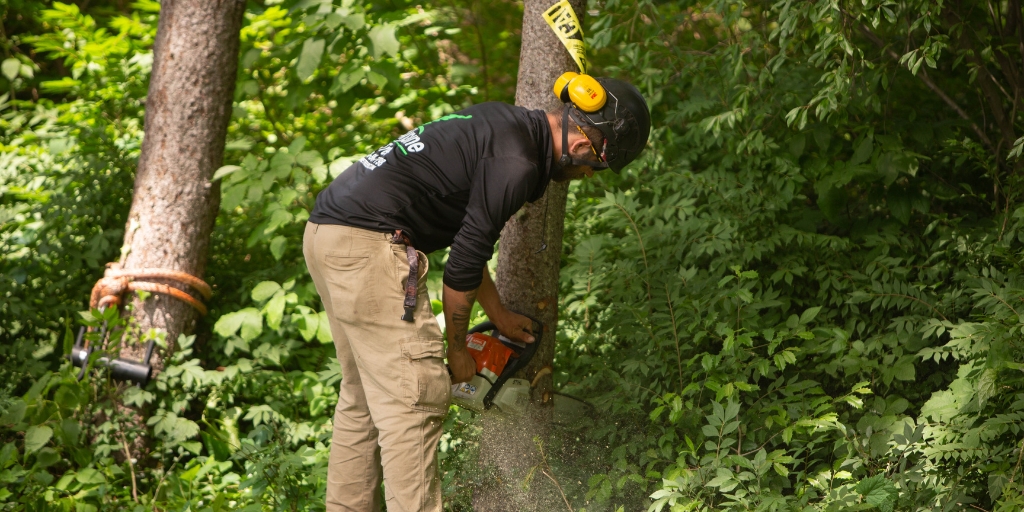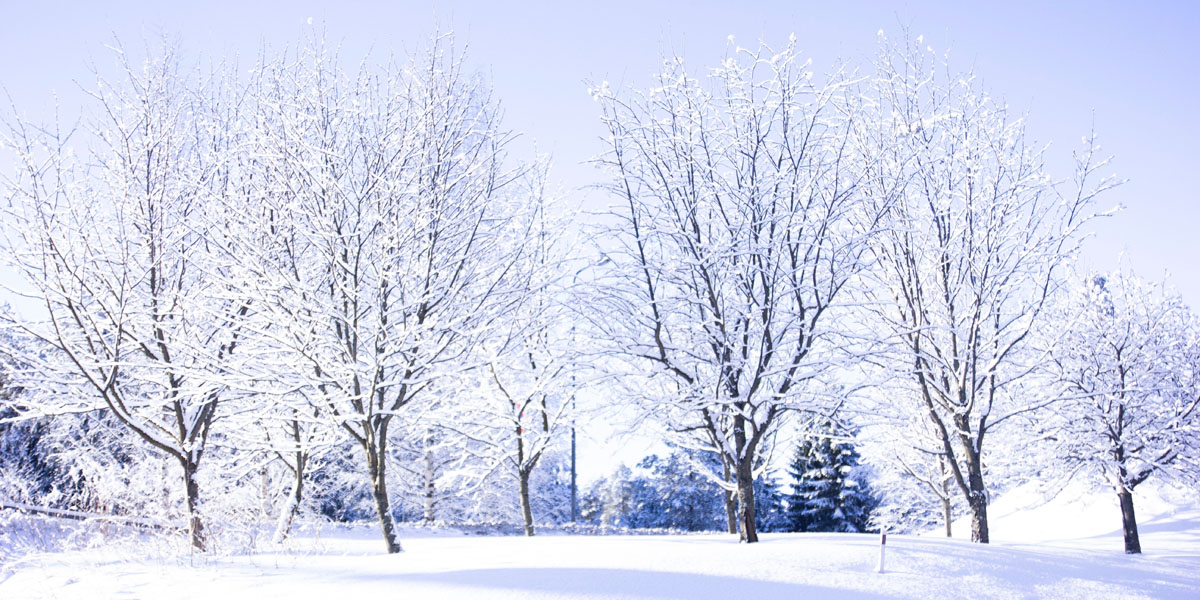If you have beech trees on your New Jersey property, they are in danger of contracting the deadly and easily transmitted beech bark disease. The disease spreads through a combination of insect and fungal activity, and early detection and prevention are vital to protecting our forests and your beech trees.
In this article, we’ll examine the causes of beech bark disease, its effect on trees, its symptoms, and how to protect New Jersey’s beech trees.
Key Takeaways
- Beech bark disease is a deadly insect-disease complex that primarily attacks American beech trees.
- There is no cure for BBD at this time.
- Beech scales create holes in trees that fungi from the Neonectria family colonize. These fungi create cankers and weaken the tree. Eventually, the fungi girdle the tree, making it unable to transport nutrients and increasing the risk of the tree snapping in half.
- Typical symptoms of BBD include the presence of beech scale (it will look like white wool), cankers with red dots, yellow leaves, and a thinning crown.
- Prevention primarily relies on controlling the beech scale population through chemicals or cultural practices (such as carefully removing diseased material and limiting tree stress).
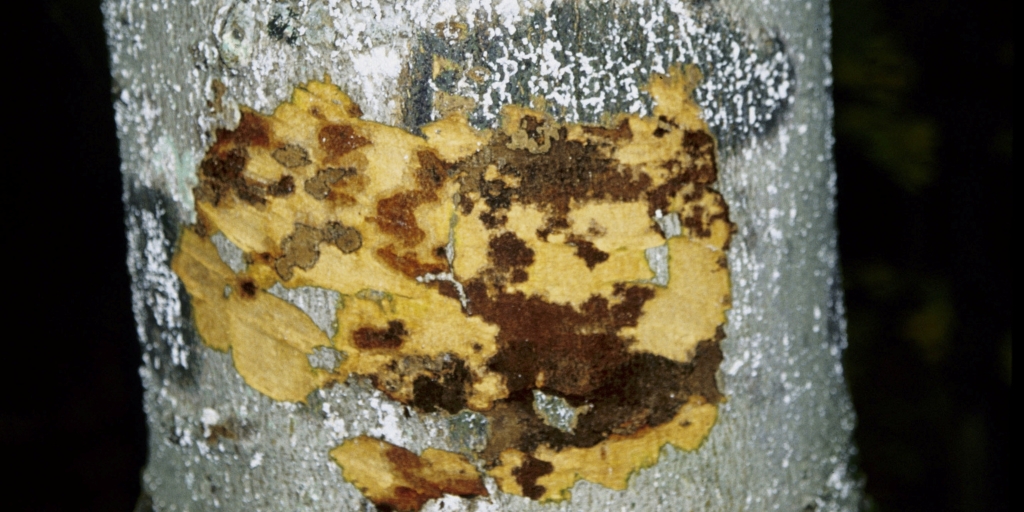
A beech tree with cankers is a typical sign of beech bark disease. Photo courtesy of Joseph OBrien, USDA Forest Service, Bugwood.org.
Beech Bark Disease in New Jersey
Beech bark disease (BBD) is a fatal disease-insect complex primarily affecting American beech (Fagus grandifolia). The European beech (F. sylvatica) is also susceptible to the disease, though it has shown more resistance.
The disease likely first appeared in Canada in the 1890s, and arborists first reported it in the United States in 1932. In New Jersey, we first encountered the disease in the 1970s. Since then, it has spread across northeastern America and killed millions of American beech trees in New England.
WARNING: Currently, there is no cure for BBD. With no cure, we urge all residents in and around Morristown to keep close watch for signs of BBD and to help contain the spread of this devastating disease.
Causes & Outcomes of Beech Bark Disease
Trees contract BBD through a combination pest activity and fungal pathogens.
The biggest factor in spreading beech bark disease is the non-native beech scale insect (Cryptococcus fagisuga). The native Xylococculus betulae can also lead to BBD in a tree.
The scale insects pierce the tree and suck out nutrients, leaving behind minor injuries. These injuries alone don’t cause much long-term harm to the tree.
SCALE INSECTS: Get all the details on scale insects and how they attack trees.
However, two different kinds of fungi, both from the Neonectria family (N. ditissima and N. faginata), will then move to colonize the wound.
The fungus kills the inner bark, causes cankers (dead sections of bark), and may girdle (render a tree unable to transport nutrients) the tree. Eventually, this infection will kill the tree outright or lead to enough structural damage that the tree breaks, usually during high wind or storm conditions, a phenomenon we call “beech snap.”
Stages of BBD Spread in Forests
This cycle makes up BBD’s three-part disease pattern in forests. The three stages are:
- Advancing front: During the advancing front, a forest will have numerous mature beech trees and see an increase in beech scale activity and population.
- Killing front: Killing fronts are visible in forests with high populations of beech scales and attacks by the Neonectria fungi causing BBD. Trees will have prominent cankers and begin dying.
- Aftermath zones: We characterize the aftermath zone as areas with substantial tree mortality. Many mature beech trees will be severely damaged or have died, and many young root sprouts will appear. These sprouts often choke out other trees and reduce the area’s biodiversity.
While you may not have a forest of beech trees in your backyard, increased pest activity in a nearby forest can lead to BBD on your trees. The wind carries beech scale nymphs to new hosts, and your trees may be next.
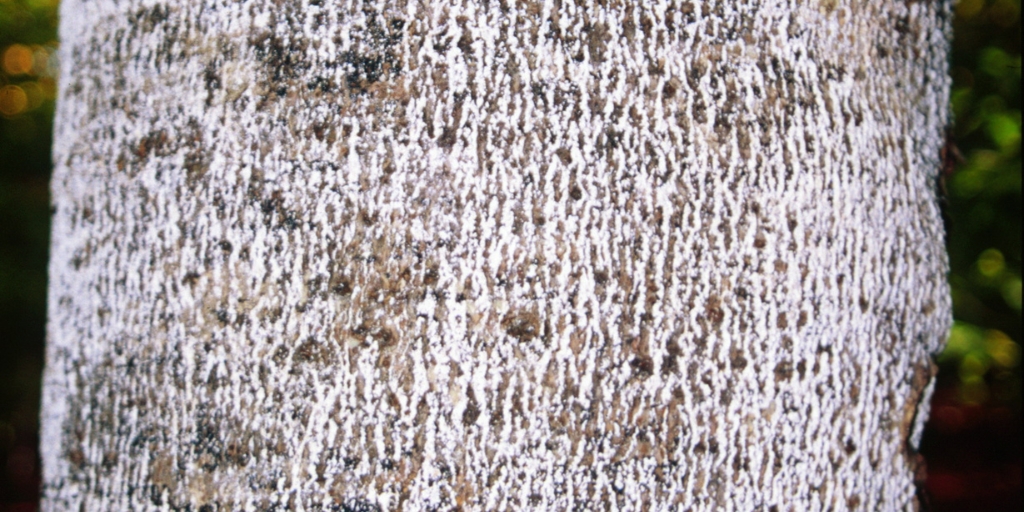
A beech scale infestation will resemble white wool on the trunk. Photo courtesy of Steven Katovich, Bugwood.org.
Symptoms of Beech Bark Disease
The first sign of BBD is the presence of beech scale on your trees. The scale insects are small and may look more like white wool than an insect. Scales may appear only sporadically until the infestation is well underway.
Look especially closely at rough bark, as this tends to be where the pests can first be found. As the density of scale insects on a tree increases, you may notice them across the trunk.
The ensuing fungal infection may take years to occur. Once it does, watch for yellow leaves and a thinned crown. The most important sign is the development of cankers (dead sections of bark) on your trees.
There will be tiny red dots on the cankers later in the year (typically by the end of summer or the beginning of fall). As the years pass and the infection spreads, you will see more cankers and they will grow larger.
When to Watch for BBD in New Jersey
Timing for Beech Scale Activity
In New Jersey, beech scales typically enter the crawler period of their life cycle (when they spread to nearby trees and are the most susceptible to insecticides) in the summer. Rutgers University advises residents to check for these crawlers at 800 growing degree days (GDD).
GDD is a more accurate predictor of when pests appear. Rather than relying on seasonal benchmarks, it focuses on how much warm weather an area has had. By looking at how much a day’s average temperature was above 50 degrees Fahrenheit, you can more precisely predict when pests may emerge. For example, a day with an average temperature of 72 degrees adds 22 GDD to the calendar.
Timing for Neonectria Activity
The fungus itself is more active during early spring and autumn, when trees exit and enter dormancy, respectively. During these times, the fungi are able to avoid many of the host tree’s defenses.
NJ TREE PESTS & DISEASES: Learn more about the pests and diseases that threaten our native trees with some of our other articles, including:
Preventing the Spread of Beech Bark Disease in New Jersey
Dealing with beech bark disease once established is difficult. Prevention is often the best method for protecting your New Jersey beech trees.
Preventing beech bark disease often relies on the holistic approach of an integrated pest management (IPM) plan.
Biological Controls for Beech Bark Disease May Not Be Effective
Biological controls, such as introducing or attracting beneficial insects to a property, are often one of the first methods arborists use to control damaging pests and diseases. However, they may not be effective in curtailing the spread of BBD. As of June 2024, BBD still has no proven biological controls.
Researchers at UMass have recently suggested that some lady beetles (like the twice-stabbed lady beetle) and four species of mites could serve as predators for beech scale. However, they won’t be able to control the population on a large scale.
Remove Diseased Material and Trees to Limit the Spread of Beech Bark Disease
Proactively removing diseased and dead beech trees helps reduce the spread of BBD and makes your yard safer.
In cases where BBD has significantly compromised a tree’s health and structural integrity, removal may be the safest option. Trees weakened by BBD are prone to breaking, posing a serious risk to your family, home, and property, especially during the severe storms we sometimes experience across central New Jersey.
However, removal isn’t always necessary. If caught early, there may be options to save the tree. For example, a knowledgeable arborist might recommend strategic pruning of dead or infected branches. This approach can help limit the spread of the fungal infection associated with BBD and potentially extend the life of the tree.
Consider European Beech for Your Yard Instead of American Beech
While American beeches have long been a favorite in New Jersey’s landscapes, it’s worth exploring other options for your property.
For those set on the beech tree’s distinctive look, consider the European beech (Fagus sylvatica) in-stead. This close cousin of our native species has shown greater resistance to BBD, potentially reducing the risk of disease outbreaks in your landscape. European beeches offer similar aesthetic appeal and shade benefits, making them a smart alternative for New Jersey homeowners.
However, don’t limit yourself to beech trees. Our region boasts several other shade trees that can be spectacular additions to your property, such as:
- Sugar Maple (Acer saccharum): Known for its brilliant fall colors, the sugar maple thrives in our climate and provides dense shade.
- Northern Red Oak (Quercus rubra): As New Jersey’s state tree, this native species is well-adapted to our local conditions. It offers excellent shade and supports local wildlife.
Both of these alternatives are not only beautiful but also tend to be more resilient to local pests and diseases than the American beech.
Researchers have worked to understand the genetic factors that make some beeches resistant to BBD. The USDA has estimated that between one and five percent of native American beech trees have resistance to BBD; arborists hope this information can aid in creating resistant cultivars.
Keeping Your Trees Healthy: The First Line of Defense Against BBD
The best way to help your trees fight off BBD is to keep them healthy. Regular tree inspections can help you spot potential issues early. Conditions that may place your beech trees under unnecessary stress include:
- Drought
- Nutrient deficiencies
- Improper mulching
- Over pruning
- Trunk or root damage
- Improper planting
Addressing these issues promptly can boost your trees’ natural defenses against BBD and other threats.
Timing is Everything: Chemical Control of Beech Scale
Chemical treatments can effectively protect your beech trees from scale insects, the precursors to BBD. However, timing is critical. Insecticides are most effective during the beech scale’s vulnerable crawler stage, typically in summer. Professional arborists use Growing Degree Days (GDD) to deter-mine the optimal spraying time, ensuring maximum effectiveness.
Professional Help for BBD Management in Central New Jersey
BBD poses a serious threat to American beech trees in our region. If you spot the telltale white “wool” of beech scale on your trees, act quickly – there may still be time to prevent the deadly fungal disease. However, if you notice cankers or red fungal growth, you should call an experienced arborist for a tree health assessment.
A New Jersey Licensed Tree Expert or ISA Certified Arborist can evaluate your tree’s health and rec-ommend the best course of action, whether it’s treatment or, in severe cases, removal to protect your property and family.
Don’t wait until it’s too late. If you’re concerned about the health of your beech trees, call us at 973-964-7798 or request an appointment online.


